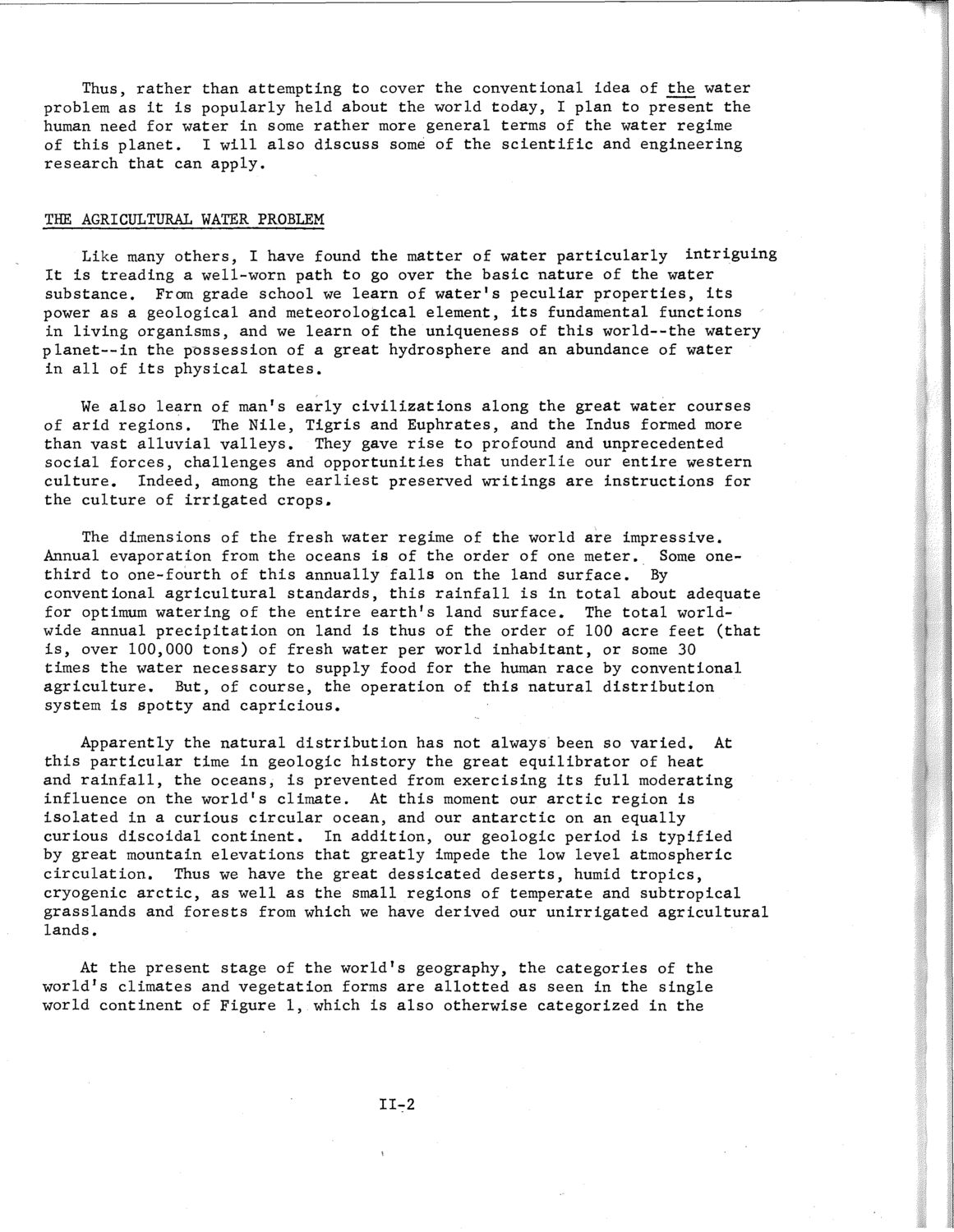| |
| |
Caption: SWE - Proceedings of the First International Conference of Women Engineers and Scientists
This is a reduced-resolution page image for fast online browsing.

EXTRACTED TEXT FROM PAGE:
Thus, rather than attempting to cover the conventional idea of the water problem as it is popularly held about the world today, I plan to present the human need for water in some rather more general terms of the water regime of this planet. I will also discuss some of the scientific and engineering research that can apply. THE AGRICULTURAL WATER PROBLEM Like many others, I have found the matter of water particularly intriguing It is treading a well-worn path to go over the basic nature of the water substance. From grade school we learn of water's peculiar properties, its power as a geological and meteorological element, its fundamental functions in living organisms, and we learn of the uniqueness of this world--the watery planet—in the possession of a great hydrosphere and an abundance of water in all of its physical states. We also learn of man's early civilizations along the great water courses of arid regions. The Nile, Tigris and Euphrates, and the Indus formed more than vast alluvial valleys. They gave rise to profound and unprecedented social forces, challenges and opportunities that underlie our entire western culture. Indeed, among the earliest preserved writings are instructions for the culture of irrigated crops. The dimensions of the fresh water regime of the world are impressive. Annual evaporation from the oceans is of the order of one meter. Some onethird to one-fourth of this annually falls on the land surface. By conventional agricultural standards, this rainfall is in total about adequate for optimum watering of the entire earth's land surface. The total worldwide annual precipitation on land is thus of the order of 100 acre feet (that is, over 100,000 tons) of fresh water per world inhabitant, or some 30 times the water necessary to supply food for the human race by conventional agriculture. But, of course, the operation of this natural distribution system is spotty and capricious. Apparently the natural distribution has not always been so varied. At this particular time in geologic history the great equilibrator of heat and rainfall, the oceans, is prevented from exercising its full moderating influence on the world's climate. At this moment our arctic region is isolated in a curious circular ocean, and our antarctic on an equally curious discoidal continent. In addition, our geologic period is typified by great mountain elevations that greatly impede the low level atmospheric circulation. Thus we have the great dessicated deserts, humid tropics, cryogenic arctic, as well as the small regions of temperate and subtropical grasslands and forests from which we have derived our unirrigated agricultural lands. At the present stage of the world's geography, the categories of the world's climates and vegetation forms are allotted as seen in the single world continent of Figure 1, which is also otherwise categorized in the II-2
| |